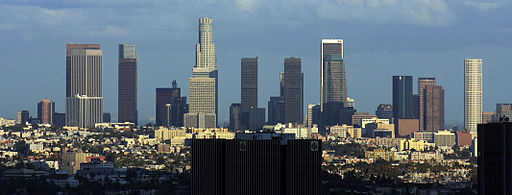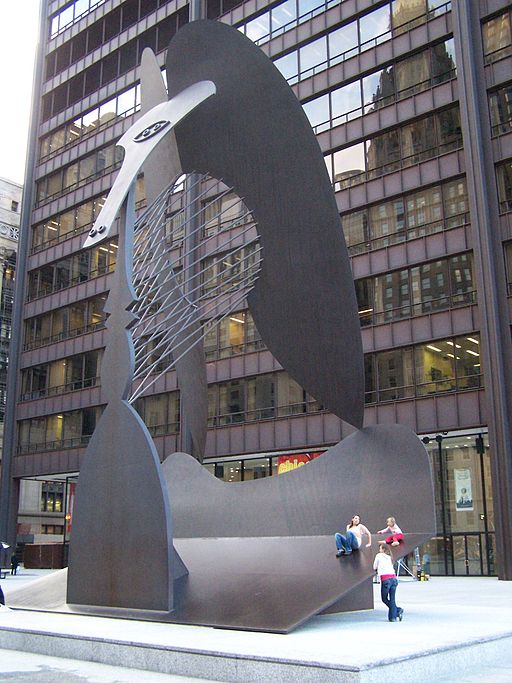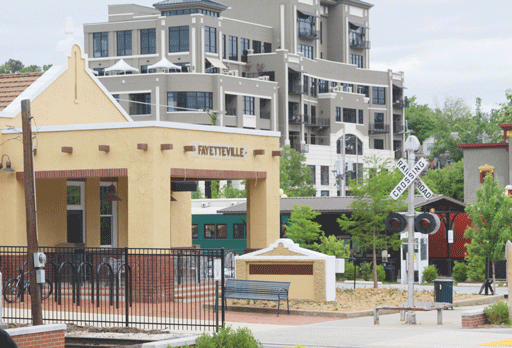 The data dont lie. Last year, many potential buyers and sellers who had been sitting on the fence jumped into the market. Sales, median price and new-home construction were all up, while distressed properties were moving through the pipeline and foreclosures were falling off.
The data dont lie. Last year, many potential buyers and sellers who had been sitting on the fence jumped into the market. Sales, median price and new-home construction were all up, while distressed properties were moving through the pipeline and foreclosures were falling off.
Room to Breathe
A local look at how 2013 went for four CRSs.
 The data dont lie. Last year, many potential buyers and sellers who had been sitting on the fence jumped into the market. Sales, median price and new-home construction were all up, while distressed properties were moving through the pipeline and foreclosures were falling off.
The data dont lie. Last year, many potential buyers and sellers who had been sitting on the fence jumped into the market. Sales, median price and new-home construction were all up, while distressed properties were moving through the pipeline and foreclosures were falling off.
This isnt to say all was perfect. By the end of the year, interest rates were inching up and sales were slowing, a serious lack of inventory plagued many markets and new construction was slow to return in some areas.
But thats the macro report. For a more micro look at last year, The Residential Specialist talked to four CRSs in different parts of the country. Some markets did better than others, but the prevailing sentiment was, In 2013, I could breathe again.
|
U.S. Housing Data for 2013 |
||
|---|---|---|
|
Category |
2013 |
% Change from 2012 |
|
Number of Sales |
5.09 M |
+9.1% |
|
Median Existing-Home Price |
$197,100 |
+11.5% |
|
REO Sales |
9.3% [all sales] |
+0.2% |
|
Short Sales |
5.8% [all sales] |
+0.9% |
|
Building Permits |
974,700 |
+17.5% |
|
Housing Starts |
923,400 |
+18.3% |
|
Closed Sales [Northern Colorado] |
10,923 |
+17.4% |
|
Median Price [Chicago] |
$156,500 |
+13.8% |
Los Angeles
 Wendy Furth, CRS, with Rodeo Realty in Encino, Calif., had a very good year. That must have been true for a lot of agents in the Los Angeles area because the 2013 median sales price increased to $405,580 a 23.9 percent increase from 2012.
Wendy Furth, CRS, with Rodeo Realty in Encino, Calif., had a very good year. That must have been true for a lot of agents in the Los Angeles area because the 2013 median sales price increased to $405,580 a 23.9 percent increase from 2012.
Meanwhile, the number of sales decreased by 4.2 percent to 43,082 in 2013, but that wasnt such bad news. Even though there were more sales in 2012, they were lower sales and many were distressed, Furth says. Distressed sales made up 35 percent of total sales in 2012 and only 18 percent in 2013.
The real bad news was that Los Angeles ended the year with just a 30-day housing supply, and thats continuing into 2014, Furth says. She attributes this in part to investors scooping up much of the more affordable inventory over the last few years.
Another reason, Furth surmises, is that many potential sellers are still upside-down on their mortgages. In many cases, homeowners who were underwater have become satisfied to stay where they are with the hopes that the market will continue to rise, which it is, she says.
New construction hasnt helped the supply crunch much so far, although in 2013, there was finally some good news: Applications for building permits increased 51 percent, from 10,706 in 2012 to 16,175 in 2013.
Unfortunately, Furth doesnt think inventory will increase in 2014. Investors are buying and normal people arent putting their houses on the market.
Northern Colorado
 Dave Pettigrew, CRS, with Berkshire Hathaway Home Services Rocky Mountain REALTORS®, works in Northern Colorado. The triangle made up of Fort Collins, Greely and Loveland offers a mix of urban, suburban and rural areas.
Dave Pettigrew, CRS, with Berkshire Hathaway Home Services Rocky Mountain REALTORS®, works in Northern Colorado. The triangle made up of Fort Collins, Greely and Loveland offers a mix of urban, suburban and rural areas.
This area didnt see a bust nearly as bad as many other parts of the country, says Pettigrew. We bottomed out in 2009, and we had a little recovery through 2010 and 2011. But in 2012 and 2013 it shot up pretty good. Record-breaking good, in fact.
Closed sales for 2013 hit 10,923, a 17.4 percent increase over 2012 and just north of the previous record of 10,845 set in 2004. The average sales price of $254,509 was a 7.1 percent increase over 2012 and also the highest ever.
Why the banner year? It was a whole lot of pent-up demand, says Pettigrew. Like elsewhere, the recession led to unemployment, decreased consumer confidence and more difficulty getting loans. In 2012, all of those things started to turn around, and by 2013 more people than ever were ready to buy in Northern Colorado.
The problem in 2013 was supply. For most of the year, buyers faced a two-month supply, well short of the six months that is considered a balanced market, Pettigrew says. And new construction isnt keeping pace. In 2013, 1,721 newly built homes sold in the area, which represented 15.8 percent of total sales. From 2001 to 2006, new construction annually accounted for 25 to 30 percent of all sales, says Pettigrew.
Pettigrew stresses that prices in Northern Colorado have always been pretty stable, even in 2009, when markets in many parts of the country were still heading down. A lot of places got hammered and people lost all their equity and foreclosures were a big problem. Around here we had a more orderly, stable market. He hopes that price increases stay in the single digits to avoid a bubble.
Chicago
 Chicago was hit hard by the foreclosure crisis, and in 2013, there was a light at the end of that tunnel.
Chicago was hit hard by the foreclosure crisis, and in 2013, there was a light at the end of that tunnel.
While year-over-year distressed sales increased by 8 percent to 115,088 in 2013, that appears to be the peak. Distressed sales grew larger almost every month in 2012, but the opposite was true in 2013, according to Midwest Real Estate Data. And that downward trend is continuing into 2014.
According to Lisa Thompson, CRS, with Century 21 S.G.R. Inc., 31,270 homes closed in 2013 in the city of Chicago, a 20.2 percent increase over 2012. The median price increased by 13.8 percent to $156,500.
As with other markets, inventory was tight. Our inventory was low for most of 2013 lower than normal, Thompson says. In Chicago, there’s about four months of inventory right now.
Not all areas of Chicago and its surrounding suburbs are booming, however. Our population has moved from one place to another some areas are shrinking and others are expanding, Thompson says.
One area that is growing and growing vertically is the Loop and West Loop. The construction cranes are back and the condo towers are going up, Thompson says. Overall, sales of new construction increased by 50 percent over 2012 to 7,540 in 2013.
Thompson thinks 2014 will be another strong year and inventory will loosen up. The waters are receding somewhat for those still underwater, she says, due to increasing prices. That will open the market for some resale. I see that happening.
Northwest Arkansas
 Two of Northwest Arkansass major cities are Fayetteville, home of the University of Arkansas, and Bentonville, where Walmart is headquartered. As Judy Luna, CRS, with Keller Williams in Fayetteville, puts it: Northwest Arkansas is basically a two-county area with a series of small towns that has rapidly been urbanizing in the past 15 to 20 years or so.
Two of Northwest Arkansass major cities are Fayetteville, home of the University of Arkansas, and Bentonville, where Walmart is headquartered. As Judy Luna, CRS, with Keller Williams in Fayetteville, puts it: Northwest Arkansas is basically a two-county area with a series of small towns that has rapidly been urbanizing in the past 15 to 20 years or so.
That rapid urbanization created a major housing construction boom that busted during the recession. There was a point in time when there was a 55-month supply of homes [in Bentonville] because the builders went crazy [before the recession], says Luna. By last year, most of those properties had been absorbed, Luna says.
In 2013, according to the NW Arkansas MLS, the total number of sales was 1,089 in Bentonville, a 20 percent jump over 2012, and 1,358 in Fayetteville, also a 20 percent increase. The median sales price in Bentonville decreased slightly from $204,000 in 2012 to $200,000 in 2013, but it increased from $165,000 to $175,000 in Fayetteville.
Foreclosures in the area increased in 2013, but that was partially due to a state law and subsequent court battle that had artificially kept houses from moving through the foreclosure process. Thats settled now, and foreclosures are moving along. According to RealtyTrac, Benton County (home of Bentonville) reported 1,173 foreclosure filings, up 45.9 percent from 2012. Washington County (home of Fayetteville) saw 524 foreclosure filings, a 7.16 percent increase.
Lack of inventory wasnt a big issue in Northwest Arkansas, though Luna says houses below the median price were in shorter supply. There was a lot of investor activity in the really low end, she says. The mid-to-high range which she defines as $200,000 to $350,000 was steady.
And new construction is revving up again. According to data from the Center for Business and Economic Research at the University of Arkansas Walton College of Business, in 2013 Benton County issued 1,488 residential permits, a 5.8 percent increase from 2012. In Washington County, 755 residential permits were issued in 2013, an 11 percent jump.
Luna is optimistic about 2014. With the improvement in the economy, more people are actually taking that step of buying a house.








Leave a Comment